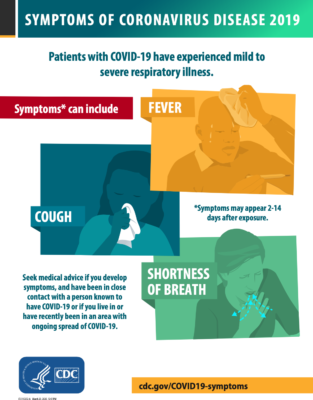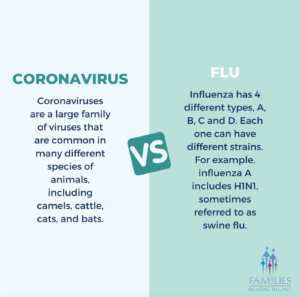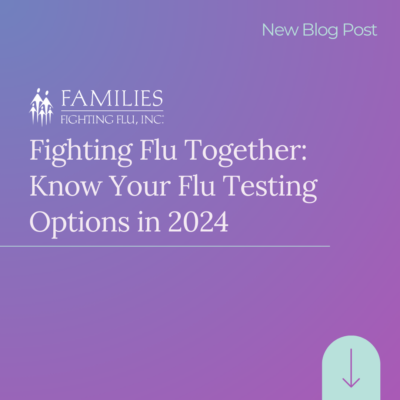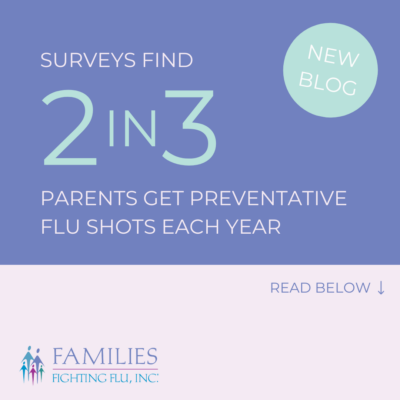
- Science & Research
COVID-19 vs. Flu: How Do They Compare?

The 2019-2020 flu season in the U.S. has set records for flu-related hospitalizations and pediatric deaths, but now we’re also dealing with a pandemic of a new (novel) coronavirus, called COVID-19. While both are viruses, influenza (flu) and COVID-19 are very different in some respects.
How are these viruses defined?
COVID-19: Coronaviruses are a large family of viruses that are common in many different species of animals, including camels, cattle, cats, and bats. Some coronaviruses cause illness in humans, while others cause illness in certain types of animals. COVID-19 is a new virus under this large classification of coronaviruses.
Flu: Influenza (flu) has 4 different types, including A, B, C and D. Influenza A and B make up what is generally referred to as seasonal flu. Each type of flu can have different strains. For example, influenza A includes a strain called H1N1, sometimes referred to as swine flu.

What are common symptoms for each viral infection?
COVID-19:
-
- Fever
- Cough
- Shortness of breath
- May include other symptoms such as tiredness
Flu:
-
- Fever
- Cough
- Chills
- Sudden onset
- Muscle/body aches
- May include other symptoms such as tiredness, sore throat, or headache
How do these viruses spread?
Both flu and COVID-19 viruses are spread through contact with infected individuals or contaminated hard surfaces. Infected individuals may be asymptomatic (show no symptoms) or symptomatic. Exposure can occur within approximately 6 feet through respiratory droplets when an infected person talks, coughs, or sneezes. Exposure may also occur through contact with contaminated hard surfaces where the viruses may live for hours to days. Touching contaminated surfaces and then touching your face (eyes, nose, mouth) may lead to exposure and subsequent infection.
Since COVID-19 is an emerging disease, we are still learning about other forms of transmission. Studies to date have indicated that COVID-19 is mainly transmitted through respiratory droplets rather than through the air.
How contagious is each virus?
COVID-19: Someone who is infected with COVID-19 can infect on average 2 to 2.5 other people.
Flu: Someone who is infected with flu can infect on average 1 to 1.5 other people.
How long are people typically hospitalized?
COVID-19: Based on a study out of China, the average hospital stay is 11 days.
Flu: The average hospital stay is 4-5 days for children and 6-7 days for adults.
Is there a vaccine?
COVID-19: A coronavirus vaccine is currently being tested for safety and efficacy in a U.S. Phase 1 clinical trial. The vaccine will likely need to undergo two more phases of clinical trials before it can be submitted to the U.S. Food and Drug Administration (FDA) for approval.
Flu: Flu vaccines change every year to reflect circulating flu strains. The World Health Organization and the FDA have already decided which flu strains to include in the vaccine for the 2020-2021 season. Compared to the four flu strains included in the 2019-2020 vaccines, three strains have been updated (i.e., H1N1, H3N2, B/Victoria) and one will remain the same (B/Yamagata) for 2020-2021.
Who is most at risk?
For both COVID-19 and flu, anyone can become sick, require hospitalization, or die due to these viral infections. For both viruses, older individuals (60+ years) and individuals with comorbidities such as cardiovascular disease can have a greater risk of hospitalization and death. However, given that COVID-19 is an emerging infectious disease, we are still learning about who is at risk, so this information could change over time. For now, we should all assume that we are equally capable of contracting and transmitting these viruses.
Interested in learning about how to help prevent both COVID-19 and flu? Read our prior blog post on how to slow the spread.
For the most recent information on COVID-19, please visit https://www.who.int/emergencies/diseases/novel-coronavirus-2019 or https://www.cdc.gov/coronavirus/2019-ncov/index.html.
Sources:
https://www.cdc.gov/coronavirus/2019-ncov/daily-life-coping/animals.html
https://www.cdc.gov/flu/about/viruses/types.htm
https://www.cdc.gov/coronavirus/2019-ncov/faq.html
https://www.who.int/news-room/q-a-detail/q-a-coronaviruses
https://www.ijidonline.com/article/S1201-9712(20)30091-6/fulltext
https://bmcinfectdis.biomedcentral.com/articles/10.1186/1471-2334-14-480
https://www.thelancet.com/journals/lancet/article/PIIS0140-6736(20)30566-3/fulltext
https://www.fda.gov/media/136302/download
https://www.medrxiv.org/content/10.1101/2020.03.17.20037572v1.full.pdf


